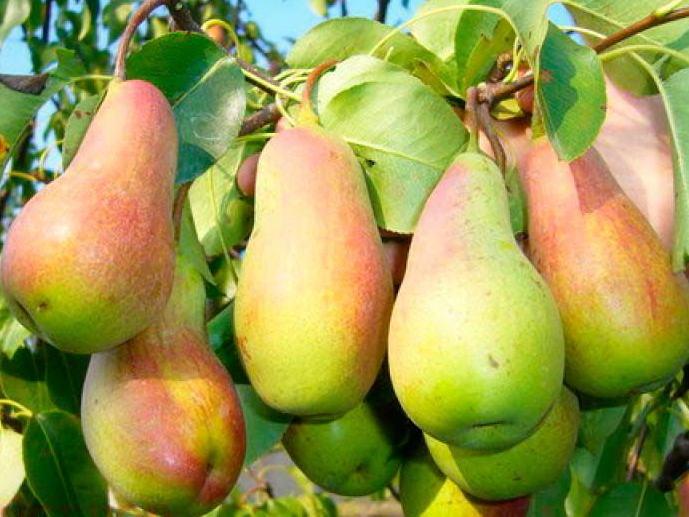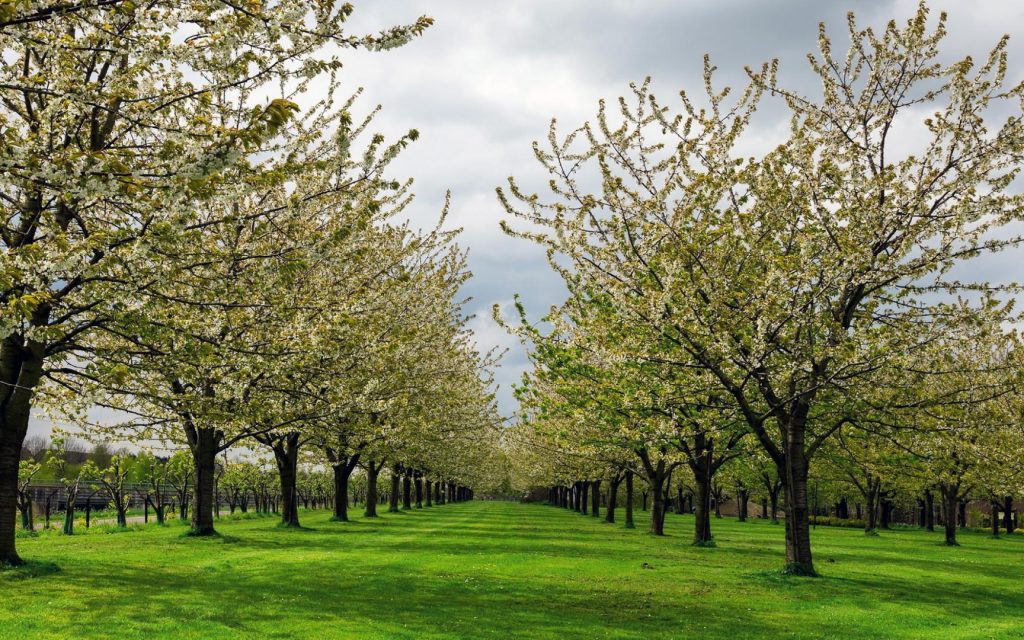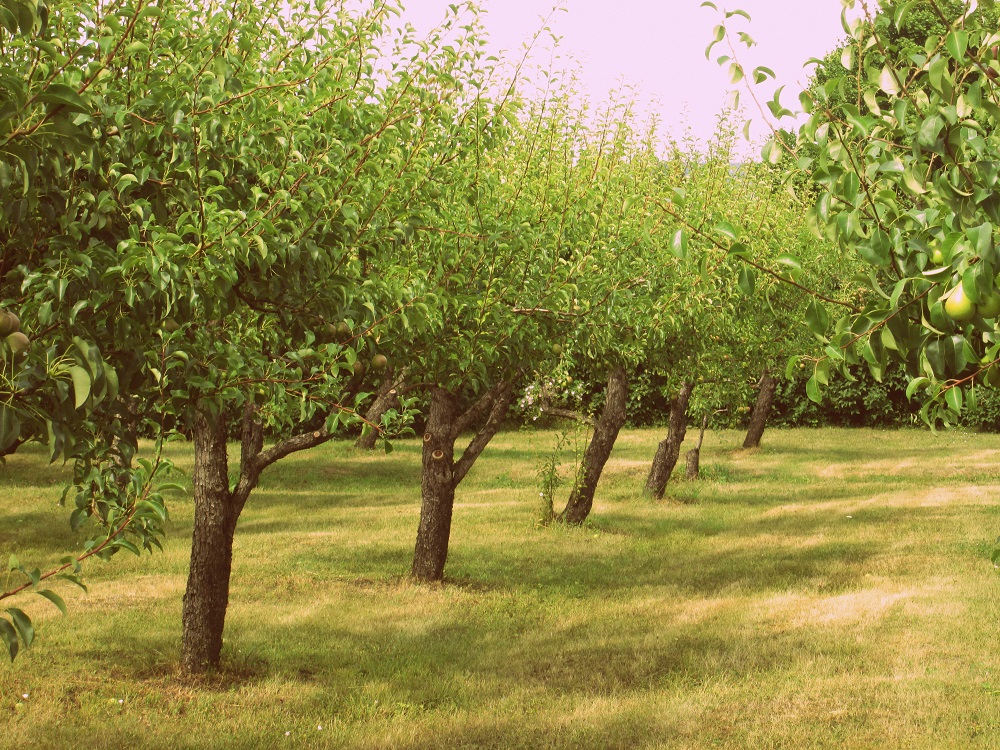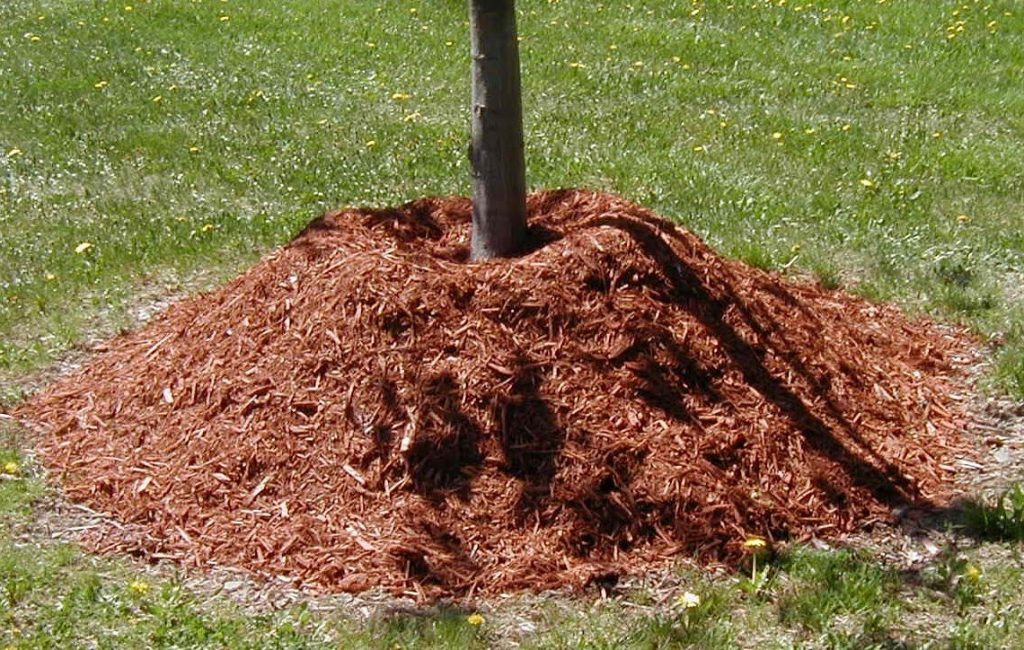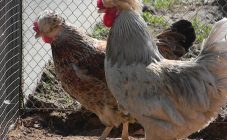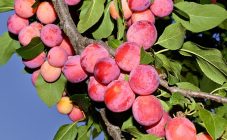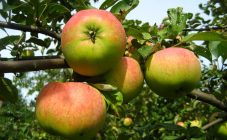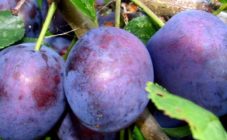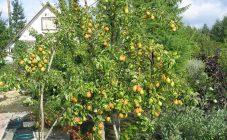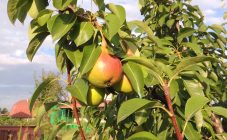Content:
When looking for a fruit tree that will delight you with a good and beautiful harvest, the Russian beauty pear will be a good option. Only the cultivation of this variety requires compliance with some rules, otherwise it will not be possible to get a good harvest.
General information
This variety is better known as pear Krasavitsa Chernenko or Moskovskaya Krasavitsa. Its fruits fully ripen only by the end of August or the beginning of September. Thus, this species is an early autumn variety. If favorable conditions are created during the harvesting process, the fruits can be stored for 1.5-2 months.
When breeding the variety, the varieties Bere Ardanpon and Daughter Blankova were crossed. The author of the Russian beauty is considered S.F. Chernenko. The Central region of Russia is suitable for growing the species.
A short description of the Russian beauty pear is as follows:
- Tall tree with narrow pyramidal rare shape.
- The fruits are large, reaching 165-180 g.
- The shape of each fruit is elongated, pear-shaped, with sufficient tuberosity, covered with a medium-dense skin and a slight waxy bloom.
- During the period of full ripening, pears acquire a greenish-yellow color with a barely noticeable brown blush.
- The pulp is dull white, very juicy, sour-sweet.
Characteristics and features of the variety
The tree of the Russian Beauty variety has the following external features:
- tall, pyramidal crown with branches growing vertically upward (with proper formation, the crown turns out to be incredibly beautiful);
- trunk with smooth brown colored bark;
- fruit buds are large, triangular in shape;
- the foliage is large, elongated, with small serrations along the edges, painted in a dark green color.
It is also worth considering in detail the characteristics of the Russian beauty pear fruits:
- fruits of the variety can reach a weight of 180 g and a little more;
- large and standard pear-shaped;
- peel of medium density with a characteristic waxy bloom;
- during the ripening period, the fruits acquire a green color with a slight blush, but full ripening of the fruit is characterized by a greenish-yellow color with a bright burgundy blush;
- the peduncle has an impressive length and curved shape;
- the flesh of pears is dull white and has a medium density.
The variety is very unstable to frost, therefore it is grown only in the Central region of Russia. Sufficiently productive, but the first fruiting occurs 8 years after planting. Resistance to diseases, especially fungal, is high, but in the rainy season there is a high probability of being hit by scab.
A pear garden will fully develop and bear fruit if it is properly planted and well cared for.
How to plant a variety correctly
In order for the Russian beauty pear variety to please with a bountiful harvest, you must adhere to the basic planting rules.
Terrain selection
The plant will feel most fully in a well-lit place.Also, the area should be flat, open and dry.
It is also worth choosing a place to place pollinators. Several trees need to be planted nearby, the flowering of which begins at about the same time. Such varieties as Moskvichka, Lyubimitsa Yakovleva or Lada Amurskaya are ideal.
Soil requirements
The pear variety feels great on a fairly loose, air-permeable and moisture-permeable soil, which for a long time will be able to retain moisture in the root system of the tree. At the same time, excess moisture will also harm the plant, so planting in lowlands is unacceptable.
Landing scheme
Since the pear does not like shade very much, the distance from any building should be at least 3 m.The interval between the planted trees should not be less than 5-6 m.
Planting pit preparation
Before starting this process, first of all, it is worth evaluating the parameters of the earthen coma with the root system of the plant. As a rule, the width is within 80 cm, and the length is 70 cm. It is approximately according to these parameters that a depression in the ground is being prepared. When preparing, the fertile soil layer must be set aside separately, since it will be required in the future. It is also advisable to set aside clay or sand, if any.
First of all, you need to pour a bucket of water with diluted dolomite flour (2 glasses) and 2 buckets of clean water into the prepared recess. The bottom of the pit must be filled with a nutrient mixture (turf, horse land, 2 buckets of humus, 3 tablespoons of potassium sulfate and 1 glass of superphosphate). The result is a slight elevation.
Planting a pear tree
Now you can start planting the plant directly:
- Place a seedling on the resulting elevation and carefully spread the root system so that each branch is directed to the bottom.
- Fill the rest of the free space with earth.
- In the process of filling, it is necessary to shake the seedling several times, holding the trunk, so that the roots straighten out.
- Tamp the soil around the trunk.
- Make a groove around the trunk with a diameter of about 20 cm.
- Pour water into this depression until the earth ceases to absorb it.
- Mulch the prepared groove around the trunk using humus or peat to help retain moisture.
- Carefully drive in a peg next to it and tie the seedling to it.
The basics of proper care
Caring for the Russian Beauty variety will not be difficult. In gratitude for the good attitude, the plant will give a rich harvest in considerable quantities.
Regularity of watering
Do not oversaturate the plant with water too much. It will be enough 4-5 waterings per season, which need to be regulated, taking into account weather conditions.
It is also not necessary to pour water under the very trunk of the plant, here it is necessary to focus on the diameter of the crown.
Preparing the tree for the winter cold
Since the variety is thermophilic, it is important to insulate the plant before the onset of winter. First of all, in the fall, you need to free the land from fallen leaves, and then loosen it.
Make a layer of sawdust or peat (25-30 cm). Roofing material or other specially designed covering material can be used to insulate the trunk and branches. When there is enough snow, it is necessary to make an elevation out of it around the trunk.
Top dressing
As a rule, a good harvest will not work if the plant is not saturated with nutrients that are useful and necessary for it. The first feeding is carried out in the second year after planting the seedling. Organic fertilizers such as compost, humus, manure or bird droppings are applied no more often than once every 2 years, and mineral fertilizers are required annually.
Pruning
The timing is important for this process. It is necessary that the tree be at rest, and this is possible only in autumn or early spring. Pruning can be of two types: sanitary and shaping.
Advantages and disadvantages of the variety
Pear Moscow beauty is highly regarded by many gardeners and there are a number of reasons for this:
- the possibility of self-pollination (but for higher yields, the planting of pollinating trees is required);
- resistance to such dangerous fungal diseases as fruit rot or scab;
- a high yield rate, allowing you to collect up to 60 kg of fruits from one fully developed adult tree;
- attractive appearance of large fruits and pleasant taste.
But it is worth noting some of the negative qualities of the variety:
- thermophilicity, which makes the tree unstable to frost;
- instability to drought, which gives the fruit an unpleasant bitter taste;
- different sizes of fruits;
- the tallness of the tree makes it difficult to care for and harvest;
- frequent damage to branches under the weight of ripening fruits.
Pear Russian beauty is highly valued by experienced gardeners for yield, unpretentious care. To grow this variety, you will need to follow certain rules and subtleties. But if you do everything consistently and correctly, the tree will definitely reward you with delicious and beautiful fruits.
